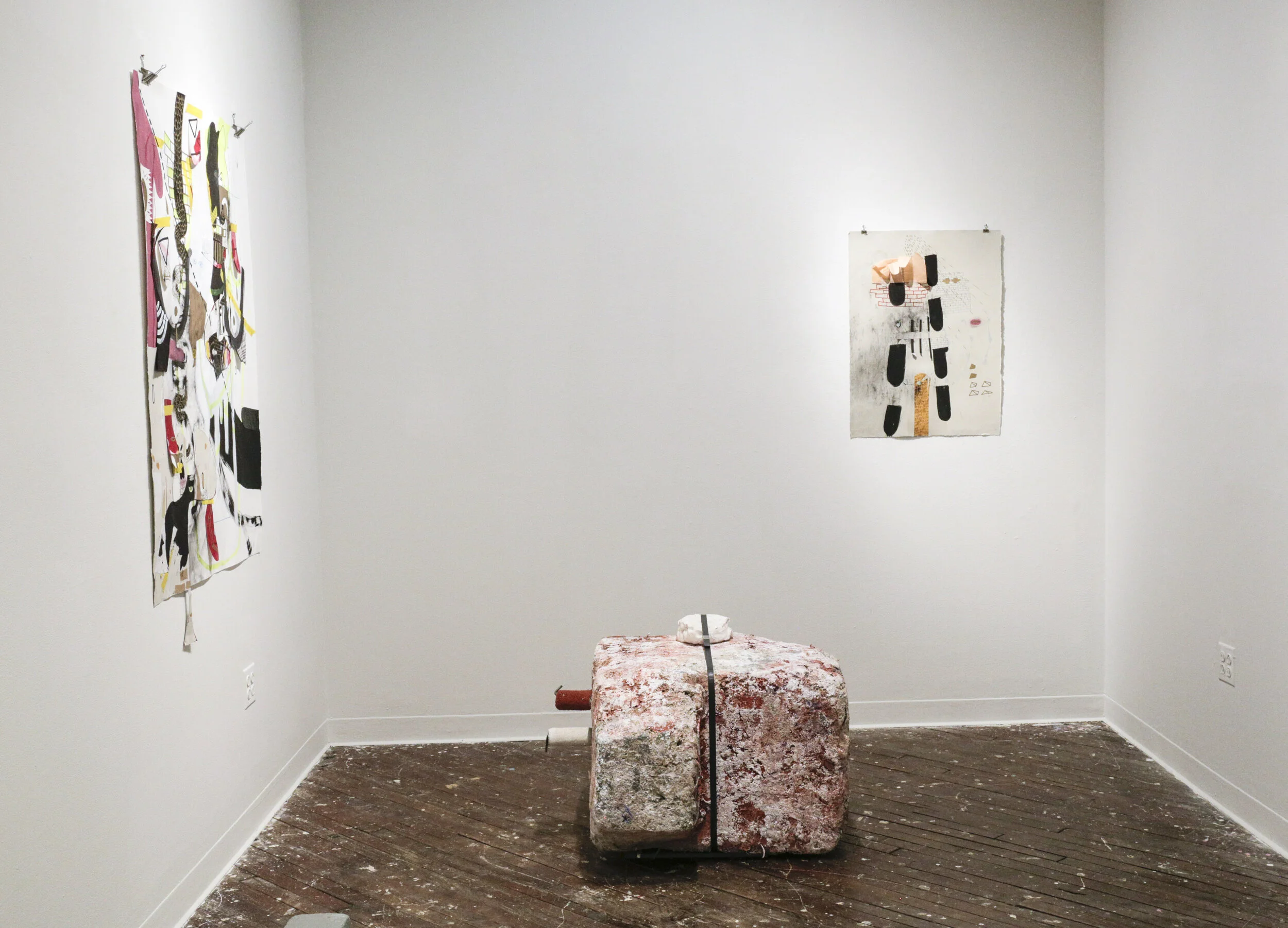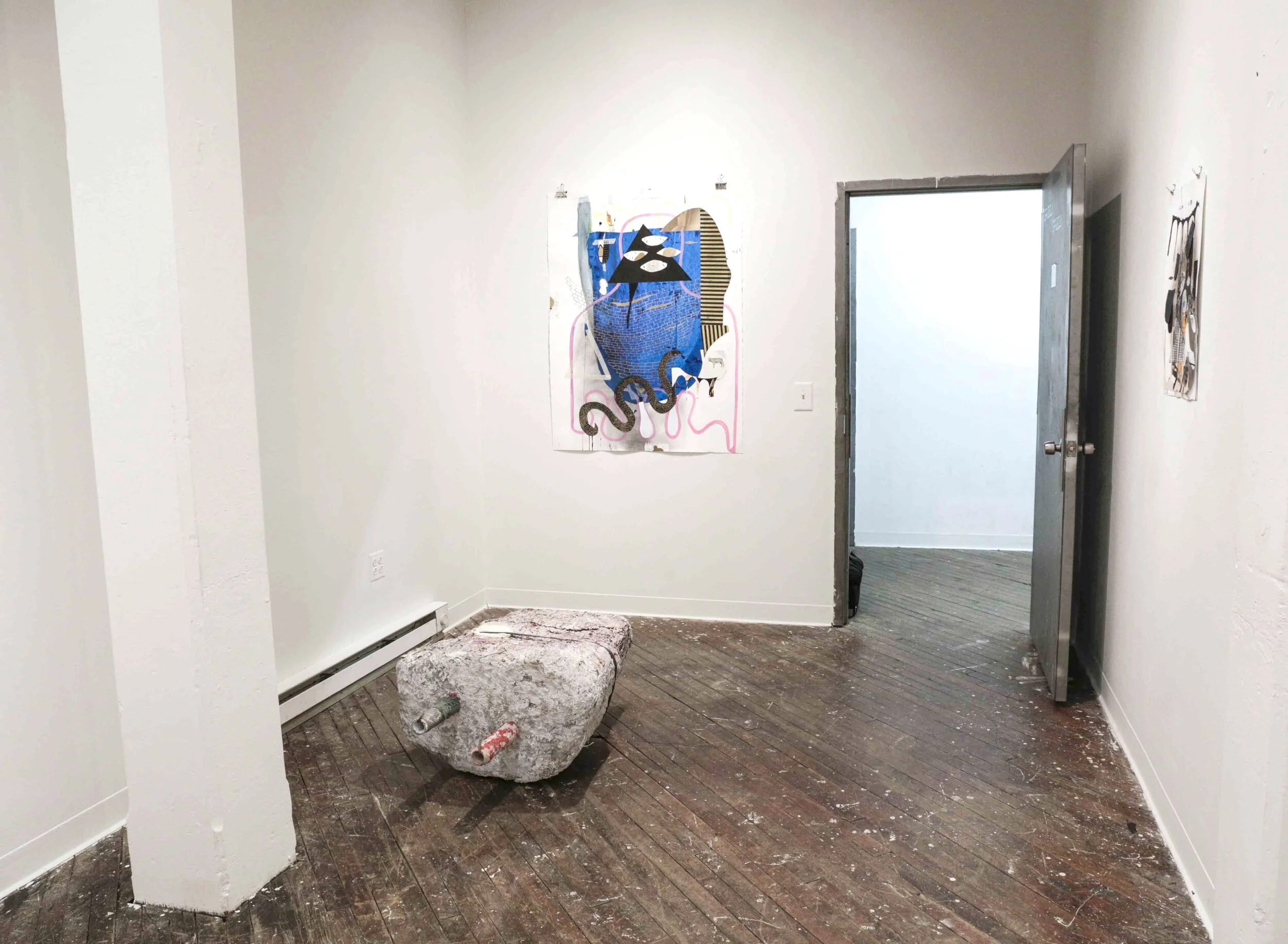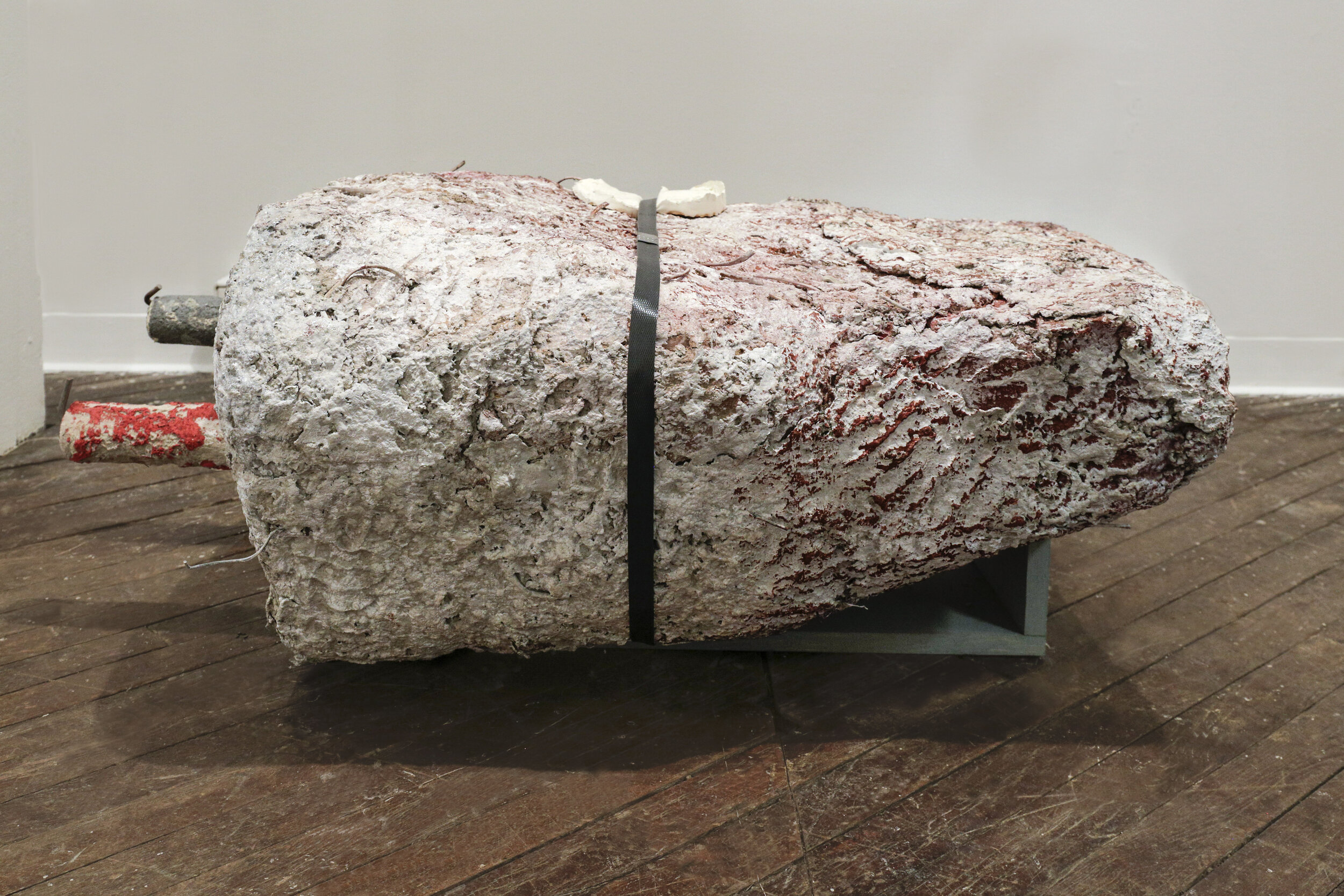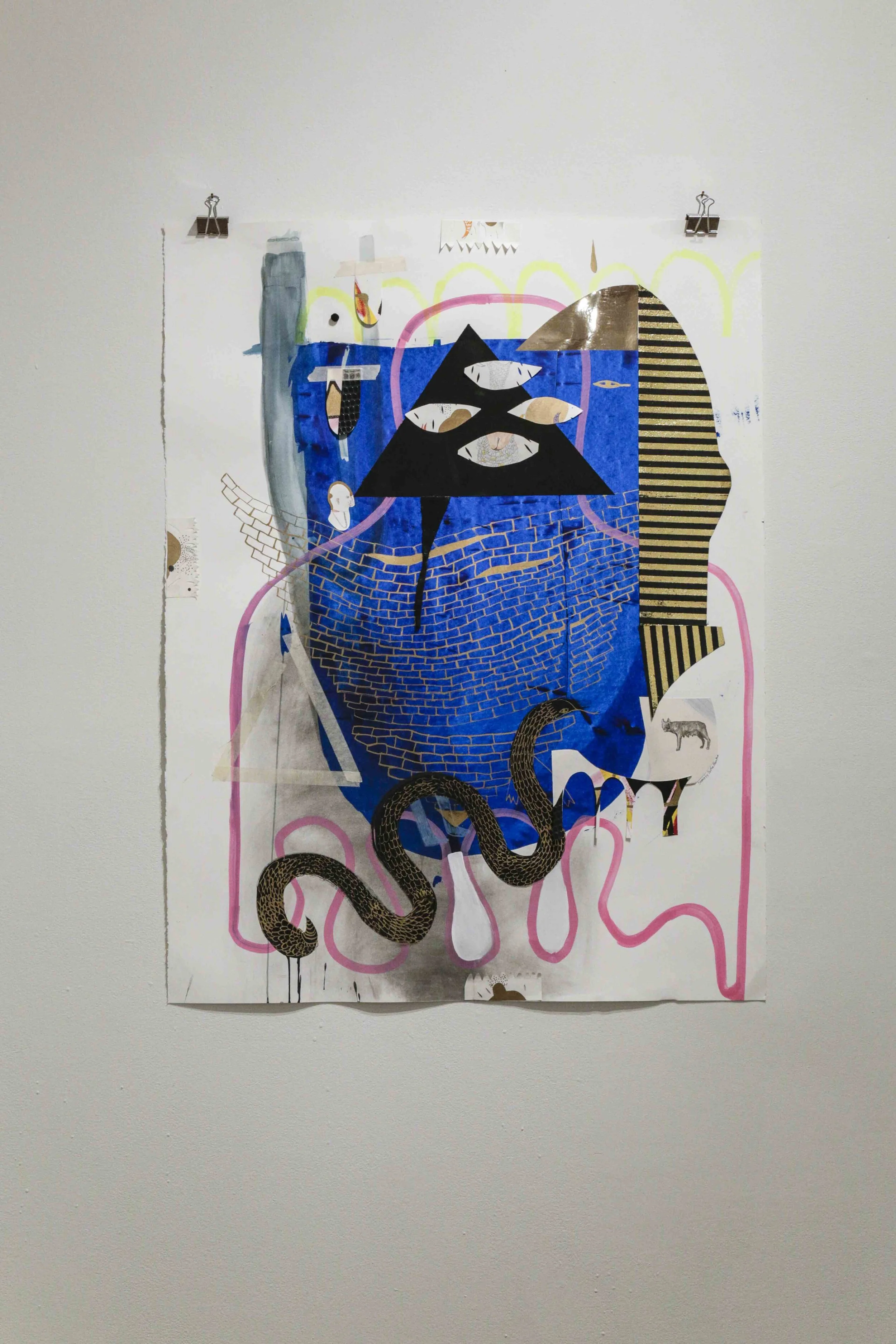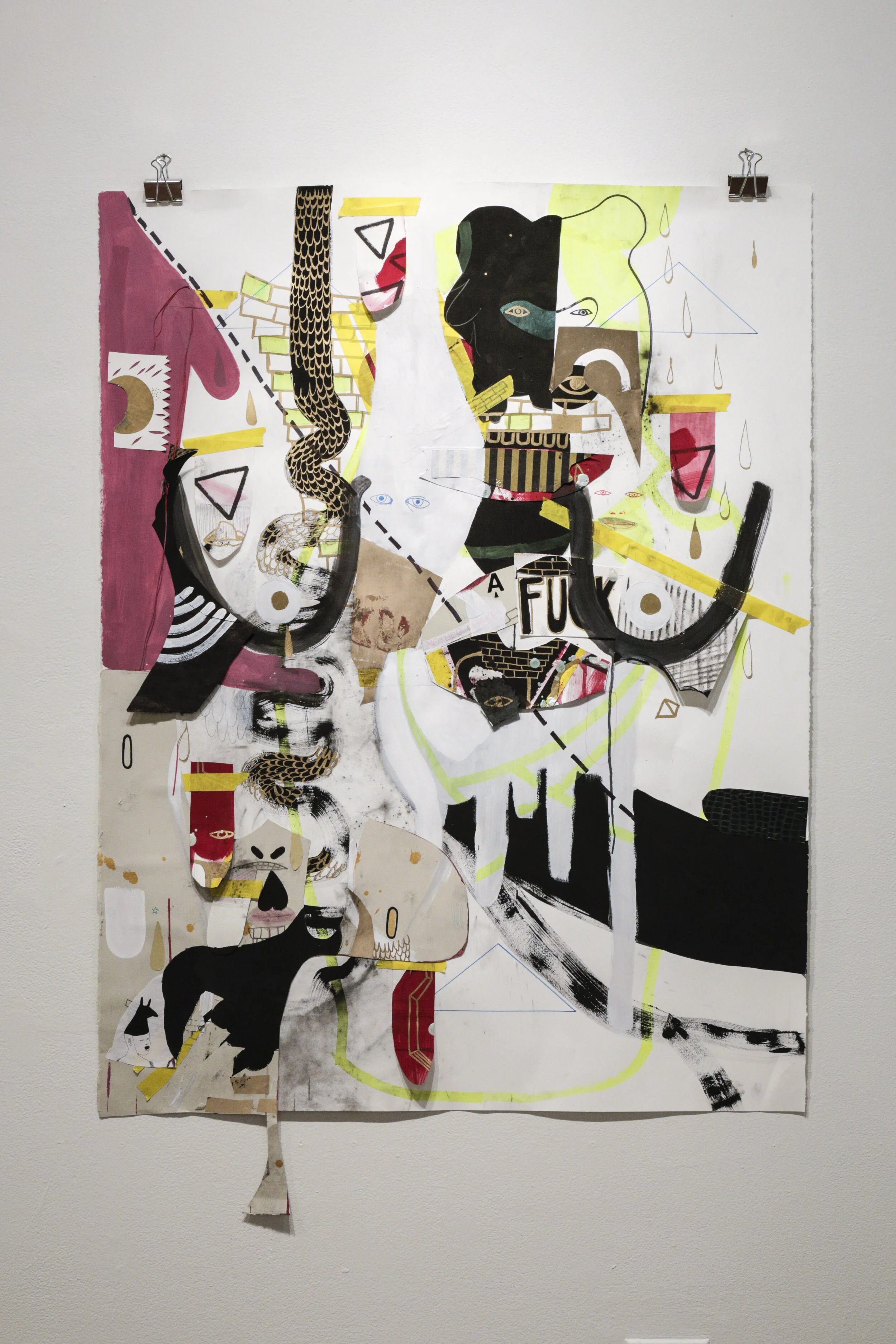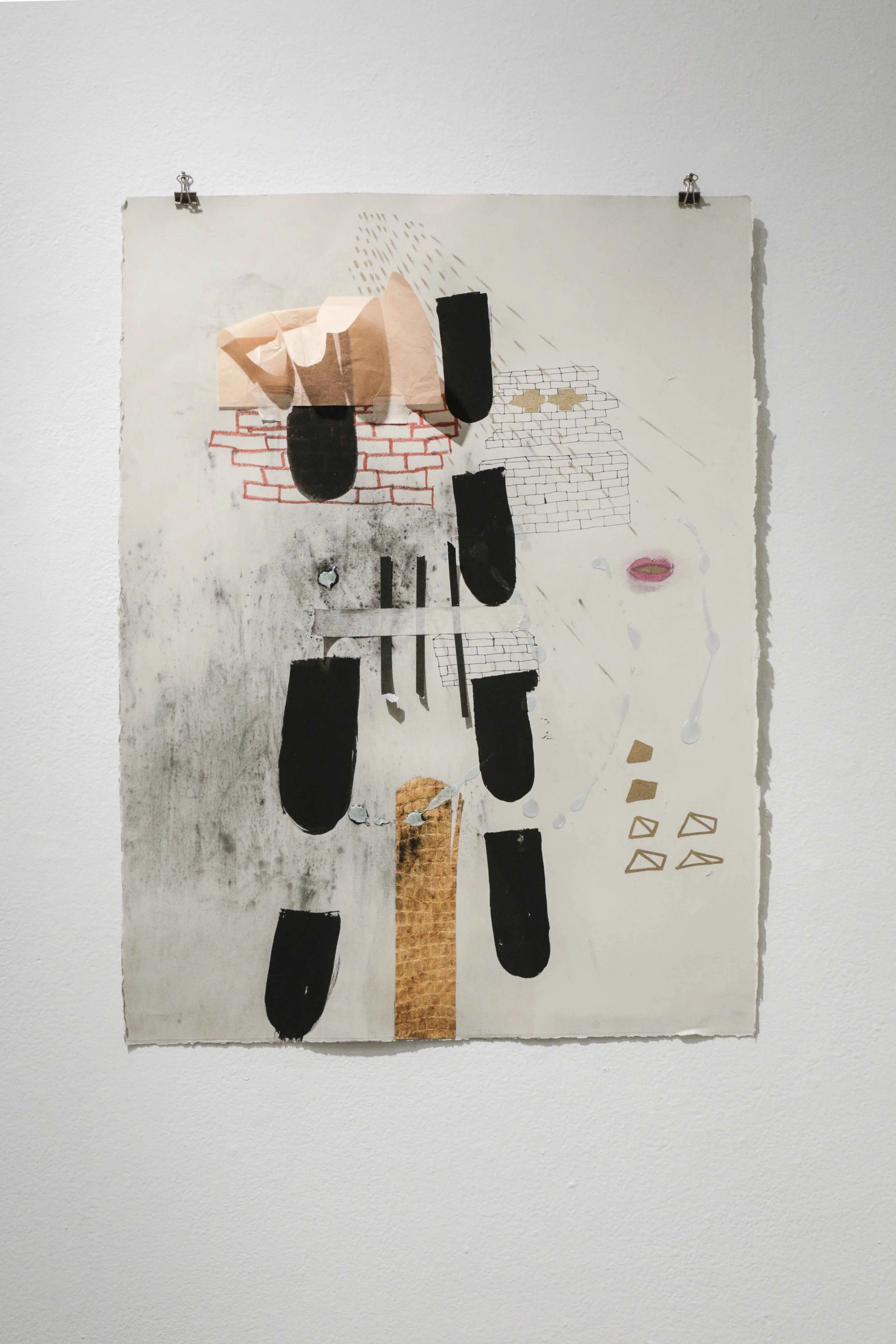Trust the Process, or On the Self, Conscious
Trust the Process, or
On the Self, Conscious
ON A DIFFERENT KIND OF TIME BY CHARLES GOLDMAN AND JACKIE MILAD
Lance Winn’s essay, Trust the Process, or On the Self, Conscious, overviews A Different Kind of Time a two-person exhibit with Jackie Milad and Charles Goldman. It is the seventh in a series of essays archiving one year of Grizzly Grizzly exhibitions, in celebration of our 10th year as an artist collective. Throughout the year, we will be collaborating with exhibiting artists and emerging and established writers to produce essays that critically reflect on the exhibitions and expand the ideas explored in our experimental project space. In addition to being posted on this blog, the collected essays will culminate in our first bound publication, to be released in September 2019. Support for this year-long project, that fosters writing in the visual arts, was generously provided by The Velocity Fund administered by Temple Contemporary with generous funding from The Andy Warhol Foundation for the Visual Arts.
It is hard, upon entering A Different Kind of Time, an intimate, two-person show at Grizzly Grizzly with Jackie Milad and Charles Goldman, to not think about matter (I know you are probably figuring that I always say that, but I don’t)—after all, in Goldman’s work, two of the sculptures are made out of RE>CRETE, which Goldman claims as “a conceptual material, containing ALL,” and in Milad’s collage pieces everything seems to be cut out of something else…in fact, everything in A Different Kind of Time seems to be made out of something else (I suppose that is actually true of most things, but perhaps made explicit, or explicitly the point, in this case). The works all seem to hint at a kind of future object—think of the monolith in 2001: A Space Odyssey (which, I think, has to owe something to those odd West Coast Minimalists of the Light & Space movement. (I remember, somewhere, McCracken suggesting that he was making sculptures for aliens?)) Or maybe Stonehenge, with Goldman’s strange hints at geometric meaning, or Milad’s diagrammatic systems that you can sense but not entirely understand (unless, in the case of Stonehenge, you happen to be there on the summer solstice at some ungodly hour…Grizzly Grizzly has no sunlight…). The works in A Different Kind of Time speak to ancient systems and yet point to a sci-fi future. I think something that Walter Benjamin would describe as Ur-historical objects? What will things look like when all these new processes work themselves out? What can we learn from past processes that can teach us about now?
I can’t help but recall my poorly constructed version of physics, or more specifically thermodynamics (neither of which any real physicist or thermodynamitician (made up) would let me get near…), and how useful, whether accurate or not, it has been to imagine how things work. I am reminded of what I think of as the second law of thermodynamics, that all matter tends towards entropy or chaos, or something like that, and was reminded of those entropic thinkers of the 60’s like Smithson, and some conversation around entropy ending in homogeneity (you would think of it as being pretty wild when everything broke down, but, in fact, as things break into smaller and smaller parts they become more similar); thinking about it in some terms like a pile of black sand and a pile of white sand, that Entropy (capital E, as in, “who is this character?” the wind? the guy from the insurance ads? just some ten-year-old that likes to kick sand?) will create a pile of gray matter. Which reminds me of the strange, slightly fleshy gray matter that feels not so much like a color but as the result of a process in Goldman’s newly invented recycling, with RE>CRETE being made up of shredded newspaper and junk mail, ground-up packing Styrofoam, home electronics wire, credit cards, CDs and DVDs, salvaged house paint, Portland cement, and glass pozzolan. And another law surfaced (of which I could find some verification, but not in the language that I would use—plus there were mathematical formulas, which looked, to me, like ancient hieroglyphs…(just to bring things back around))—that matter does not increase or decrease but only changes form (I find this both beautiful and troubling)…and I had a somewhat horrifying image of the future world as being entirely constructed of recycled things that were the kind of non-color of RE>CRETE. Which led me to think about a hill I drive by that is being constructed along the Delaware River. It is built of trash and has continued to grow during the fifteen years I have been passing by it. I’m sure, through some intensive research and science, that whoever is building this hill has managed to figure out how the matter will decompose and has filled in around and over the trash with a layer of topsoil, which has sprouted grass, and which, if you pass by from the right angle, on a pretty day, looks like a special place for a picnic overlooking the river (I mean, really, what is so different from a pile of trash becoming a hill and the earth growing over the bodies of dinosaurs that now produce the oil that we so like to consume? maybe a lot?) and I wonder what kind of rock matter will be formed by that hill of trash (maybe something very similar to the ALL of RE>CRETE)…Which brought another image to mind of the rock mining pits…where mountains and hills are being removed. Matter moving from one state into another; some path where a slab of marble is removed for a kitchen counter, where some potato chips are eaten, maybe a beverage consumed, the packaging sent off in the trash to help build the hill along the river…the displacement of matter into a fully realized landscape/worldscape (that, in the removal of matter from one place and the addition of matter to another, and throw in a little entropic function, and the elevation of the world will become closer to homogenous, a little flatter). And finally, some recollection of a conversation about bronze statues being melted because the bronze was needed to make weapons, and again, the shift in the state of material that reflects what is of concern to the population at any given time. As Milad comments in her statement for the show, “We assign value to objects, and those same objects can shift meaning depending on perspective, time in history, and their given cultural context. How does a society come to these determinations, who has dominion over what is highly valued or not?” What type of ideological “form” will reflect the beliefs of a group of people? The hill of trash being only one, kind of funny (not super funny) way of depicting the natural, “the hills are alive…” when it could be another form; a cube; a monolith (although I guess a hill is about the simplest form for a pile of matter to take?).
Which make Goldman’s distinctly not-hill-forms feel even more specific and peculiar; the geometry hinting at the intersection of a consciousness giving form to matter. He calls them spacekraft, super-funny, because a spacekraft is the ultimate non-form, or has always kind of been the space for imagination (why, in the end, would something need to be “sleek” in anti-gravitational space?). What was the shape of that recent asteroid? The signifier of Goldman’s objects being “sculptures” is the one metal strap holding an object that must be the cockpit of the abstract geometry, and which also, very subtly, gives hints as to the density of this RE>CRETE—I mean, why would we think that something made from all recycled matter would be particularly hard? (Maybe the trash-hill will have a certain bounce to it that people would find delightful?)
Milad is also involved in a kind of recycling; not of detritus, but of her own works, which become the material that she deconstructs to build new work. Her two-dimensional (they actually have quite a bit of a third dimension) collages hint at the geometric in a different way than Goldman’s do, but similar as a site for human thought, as some blend of system, diagram, and cartography. Milad writes that “in my current studio practice, I cut up older completed drawings, in some cases artworks I've held on to for years, and now use for collage material to redefine their value and purpose. This sustainable process of making art is messy and most times irreverent—but an endless source of production.” In the context of Grizzly Grizzly, I could imagine Milad making her next show by cutting up the current collages to make new ones until, when the project was complete, her wall objects would become the same neutral gray of RE>CRETE, the matter ultimately returning to its natural state, in the end, as pulp, that somewhat beautiful color of what we used to call newspapers. (I know, probably a bit much there, but…)
It is a tribute, I think, to the artworks that through subtle acts of making and a belief (trust) in a process, a commitment to process, one is able to reach these kinds of conclusions. The show triggered something I have been thinking about a lot lately. Maybe it was the people on the radio talking about a glacier that is about to give way that will cause the ocean to rise eleven feet (talk about the displacement of a finite amount of matter—imagining how the very face of the earth will change (we are not talking about waves here, just the ocean being eleven feet higher…)). But perhaps bringing up a bigger point, it seems that there are at least two very different approaches to coping with the problems (must they be framed as problems?) that we face today. I am not talking specifically about just the environment here, but I might lean that way for a minute. One belief seems to be that we just keep pushing forward and that our supreme intelligence and inventiveness will keep finding ways to solve the problems we have created. We will harness new forms of energy and will continue to come up with solutions to humanity’s complications—that is the entrepreneurial spirit! (I think about this as a kind of Dr. Frankensteinian hubris that Mary Shelley warned us of at the beginning of the industrial revolution; but hey, we have not gone up in smoke yet.) Or, secondly, we might have to change our behaviors or our very way of being (maybe considering some ancient forms of being that Milad hints at in her work), which it seems no one really wants to do (or it has most recently been framed as offensive, regressive, even kind of fascist, to ask people to change their behaviors; self not excluded). There is a good side conversation here about the Chinese government’s ban on plastic bags…which I will leave for now…except to say that any “ban” seems pretty fascist? I guess the truth is that we all live with all kinds of bans? What are the bans we find acceptable? Or, the third option, I guess, is that we continue to push forward until things are not sustainable, and we get on our gray-matter geometries (spacekraft) and cycle through the matter on other planets (there seems to be a lot). We are, and have been, on many fronts, facing up to a history of a destiny that some considered manifest, and perhaps this is simply the next step? In any case, for the moment, there is a future that is going to happen, and Milad’s and Goldman’s commitment to process as a meaningful practice helps encourage us to think about the matter(s) at hand.
Lance Winn is an artist and—when forced—writer who teaches at the University of Delaware. His art and writings have been included in a range of recent books, including a collection on three-dimensional typography, another on Paul Virilio’s influence on contemporary artists, and an essay in The Material Culture of Shopping. Winn’s work has been shown nationally and internationally, and in 2007 was collected for a survey at the Freedman Gallery. His robotic video installations in collaboration with Simone Jones have been shown at Nuit Blanche in Toronto, the Ronald Feldman Gallery in New York, and at the Icebox Project Space in Philadelphia. Their robotic installation, End of Empire, was included in the 2014 Montreal Biennale.
Charles Goldman is a Brooklyn-based interdisciplinary artist. He is the founder and director of GRIDSPACE in Brooklyn, NY. His work is included in public and private collections has executed public projects and exhibited work internationallyMuseum of Art and Design in ; Whitney Museum of American Art at Altria in ; The Drawing Center in ; the Birch Libralato Gallery in Toronto, ; Art Caucuses in Tbilisi, Georgia; Brooklyn Academy of Music in ; Portland Institute of Contemporary Art in Portland, OR; and Toronto Sculpture Garden in Toronto,. He has participated in residencCivitella Ranieri, Art Omi and The MacDowell Colony. In 2011, Goldman was awarded a Guggenheim Fellowship in Fine Arts. RE>CRETE>, a green building material of his own design, has recently been accepted into the Materials Connexion library.
Jackie Milad is a Baltimore artist who has been featured in group and solo exhibitions nationally and internationally. Milad received her BFA from the School of the Museum of Fine Arts at Tufts, and her MFA from Towson University. In addition to her active studio practice, Milad has an extensive career as a curator and educator, where she has committed many years to the education and support of emerging artists. Select exhibitions include The Walters Art Museum in Baltimore, MD; Grizzly Grizzly in Philadelphia, PA; Phoebe Projects curated by Alex Ebstein in Baltimore, MD; Gettysburg College in Gettysburg, PA; Museo de Arte de Mazatlan in , Mexico; DiFOCUR de Sinaloa Galleria in Culiacan, Mexico; and Transmitter in Brooklyn, NY. Milad is a three-time recipient of the Individual Artist Grant from Maryland State Arts Council. In 2019 she was honored as a finalist for the prestigious Janet & Walter Sondheim Prize.


